Many great starter kits for making hard cider are available online and generally include basic essentials such as a fermenter and airlock but beginners quickly outgrow these setups. For someone looking to make a decent size batch and have more control over their homemade cider, they need to start with the right equipment. The best part is, it doesn’t cost much more than some of the basic cider starter kits.
The 4 pieces of equipment (plus sanitizer) below are everything you need to get started making cider in 5-gallon batches and will allow you to grow without spending a ton of money. This equipment can also be used for brewing beer or making wine and mead.
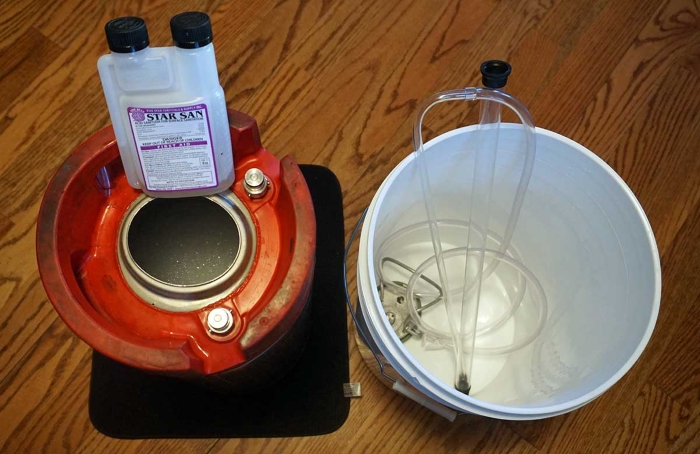
Home Cider Making’s Starter Setup
5 – 6.5 Gallon Fermenter
A 5 gallon fermenter will allow you to experiment with different size batches and gives you room to grow. Many kits come with a one-gallon carboy that will quickly be outgrown and leave you waiting to make your next batch. Going with a larger fermenter allows you to make a one-gallon test batch or a 5 gallon batch or anything in between.
Fermenting cider with a lot of extra room (headspace) in the fermenter is not a problem as that space will be filled with CO2 as fermentation begins. So going with a bigger fermenter is not an issue.
However, you will want to transfer the fermented cider into a container with minimal headspace after active fermentation has stopped to limit oxygen exposure. This can be a smaller bucket for if you choose to bulk age the cider or straight to bottles.
The fermenter that I often use is an Ale Pale that is made from food-safe plastic. Because the lid of the bucket comes off, it is easy to clean, unlike glass carboys. The plastic fermenter is also much cheaper, lighter than glass and won’t break.
Having a second bucket on hand, or a stockpot large enough to hold your batch is also convenient for aging or preparing to bottle.
Airlock
An airlock is a very simple device that keeps the good in and the bad out. There are two different types and both work great. The first is an S lock and the second is called a three-piece airlock. Both airlocks allow CO2 to escape from the fermenter while keeping bacteria, mold, and bugs out of your precious batch of cider.
Some guides online suggest using many different substitutes such as cheesecloth or even balloons. For just a couple of bucks, play it safe and get a proper airlock and protect your expensive cider from contamination.
Five Essential Pieces of Equipment





Hydrometer
Most beginner hard cider kits will not include a very important tool, the hydrometer. I suspect this is to make the kit cheaper but without a hydrometer, the cider maker will have no idea how their cider is fermenting or the expected ABV.
A hydrometer is pretty cheap and it allows you to gather real data about your fermentation so you can make better cider. It’s definitely worth it.
Auto Siphon
Once your cider is finished fermenting, it will need to be taken off of the lees, or yeast. Using a siphon to transfer the hard cider into a clean fermenter for aging or to bottles allows you to leave the sediment behind. This makes it easier for the hard cider to clear and reduces the chance of oxidation that can happen when the cider is poured.
I like to use an auto siphon that is extremely easy to use. Simply give it a couple of pumps and the cider will be flowing.
Don’t forget about sanitation!
Although homebrewing cleaners and sanitizers and not technically a piece of equipment per say, they are just as important. Anything that will be used in the fermentation of cider will need to be properly cleaned and sanitized to limit the risk of infections.
One Step and Star San are my go-to products, they are simple to use and it only takes a couple of minutes.
For a detailed guide on cleaning and sanitizing brewing equipment, check out this post.
And that’s it!
For a simple cider making kit, that is all you need to get started. You can always add more in the future as you take on new challenges in your cider making journey!
Cider Ingredient Kits
Cider Equipment Kits
If you prefer to buy a prepackaged kit that includes a few extras or less hassle, there are several packaged cider fermenting kits available.
Don’t Forget About Bottles
Bottling finished cider is a simple and low cost method to preserve and carbonate your cider (compared to kegging). Finished cider needs to be stored in an air free environment to prevent oxidation and the vessel must withstand pressure if you wish to carbonate.
When I began, I reused clean and sanitized beer bottles (pry off cap style only) and would recap them using a capper and new crown caps.
Flip top bottles are also great for bottling cider and do not require a capping tool. Just fill with cider, flip the top and they are ready for storage. These bottles can be hard to find used but luckily most home brewing shops carry them and they are also readily available online.





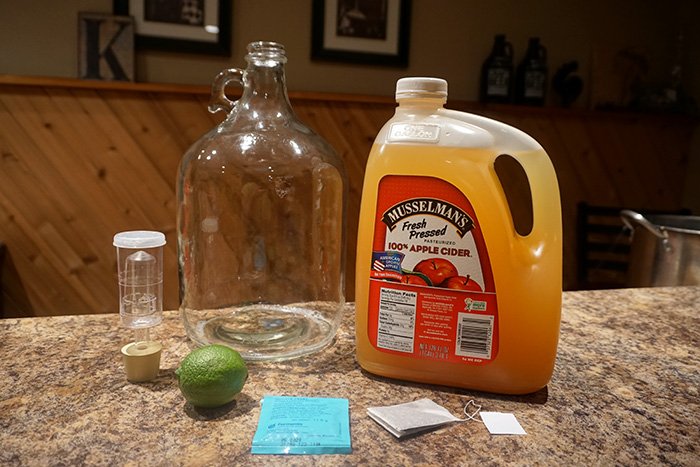
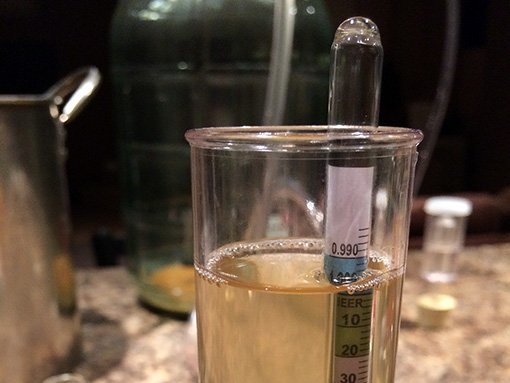
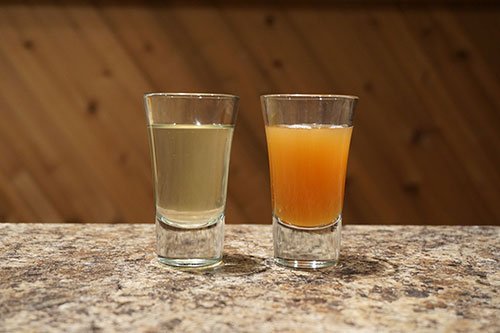
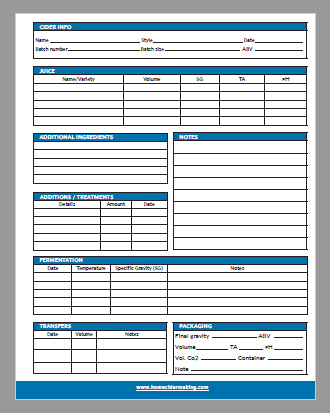
Great explanation. You’re clearly an expert. Where can I get a proper kit ? Can you put one together? I pay. Thanks